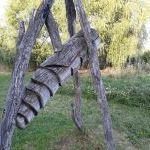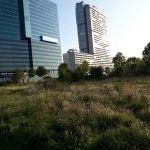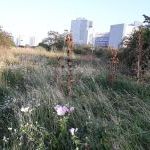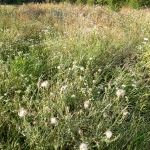Project Vanessa
The scientific name of the Red Admiral butterfly is Vanessa atalanta. This name has been taken as a name for ths community growing project. A ten thousand square metre park in the middle of Vienna was transformed into a butterfly meadow. From May to September, more than forty different butterfly species and many other insects, birds and aquatic animals are found here. Children from Kindergardens and schools visit this park to learn about nature.
Website
Country
Media
Photographs by M. Jaros, A. Brezansky, R. Zehetgruber
Useful links:
Social Farms and Gardens provide a directory of urban farms to visit in the UK
The RSPB has information on urban nature reserves
* TOP TIP *
Sow some butterfly attractive plants in your school grounds, then conduct a survey once they are grown to see which butterflies they have attracted.
How is the project linked to climate change & sustainability?
The aim of the project is to demonstrate the ecological interrelationships between urban nature reserves and species occurrence. About two hundred and fifteen species of butterflies are found in Austria and more than fifty percent of them are on the Red List of endangered animals. Vienna is the federal province in Austria with the highest number of butterflies, due to the creation of urban nature reserves. These reserves help to conserve threatened species and provide residents the opportunity to learn about the nature that lives alongside them.
How are the participants involved?
In 2003, a school class from the Langobardenstraße primary school started to help with the design of the butterfly meadow. The project leader Marion and her son David Jaros breed butterflies in their spare time. The breeding takes place in the small caterpillar house. This provides the opportunity for the children to hold caterpillars and freshly hatched butterflies in their hands. Children between the ages of three and ten are particularly receptive to these experiences and research has shown that the children still can recall the information learned during the workshops weeks after.
Key steps
- With the help of butterfly friendly seeds and plants, a butterfly friendly habitat was created.
- Over the years forty seven species of butterfly have been identified on the site.
- A wide ranging educational programme has taught children about biodiversity on their own doorstep; the life cycle of butterflies, and the biodiversity value of semi-natural habitats.
“The children and the pedagogues of out kindergarden were very enthusiastic and so we all decided to block off a large piece of lawn and sow meadow flowers. The lawn mowers will stay outside. We will also plant nettles. Thank yoo on behalf of the butterflies". Kindergarten pedagogue




